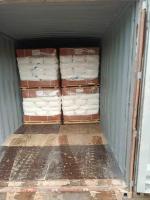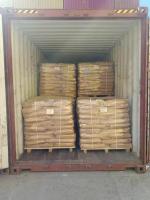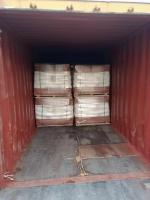Our Products
Polyacrylamide / Cationic polyacrylamide of praestol 611BC 851BC 835BS can be replaced by Chinafloc C

Cationic polyacrylamide of praestol 611BC 851BC 835BS can be replaced by Chinafloc C
praestol 611BC 851BC 835BS are three kinds of cationic polyacrylamide with low medium cationicity mainly used for water treatment and sludge dewatering ,Chinafloc C1012 and Chinafloc C3012 can replace of them with good performance.
Cationic polyacrylamide (CPAM) is a type of water-soluble polymer that contains positively charged functional groups. It is commonly used as a flocculant in various industries and applications due
to its excellent flocculation, sedimentation, and clarification properties. The word limit you've requested is quite extensive, but I'll provide a
comprehensive overview of the applications of cationic polyacrylamide in various fields.
1. Water and Wastewater Treatment:
Cationic polyacrylamide plays a crucial role in water and wastewater treatment processes, where it is used as a flocculant to remove suspended
particles, colloids, and impurities from water. It promotes the formation of larger, denser flocs that settle quickly, facilitating the separation of solids
from the water. Applications include:
Municipal Wastewater Treatment: CPAM is used to treat municipal sewage and industrial wastewater to improve water quality before discharge
into natural water bodies.
Industrial Effluent Treatment: Various industries, such as pulp and paper, textile, food and beverage, and petrochemical, use CPAM to treat their
effluents and meet environmental regulations.
Drinking Water Treatment: CPAM aids in the removal of turbidity and contaminants from raw water sources, making it suitable for drinking water
treatment.
2. Paper and Pulp Industry:
CPAM is widely employed in the paper and pulp industry to improve pulp drainage, retention of fines, and the formation of paper sheets.
Retention and Drainage Aid: CPAM helps retain fine particles during the papermaking process, leading to improved paper quality and reduced
production costs.
Formation Improvement: It enhances the formation of paper sheets by promoting even fiber distribution and reducing defects.
3. Mining and Mineral Processing:
In mining and mineral processing, CPAM is used for solid-liquid separation and dewatering of mineral slurries.
Tailings Dewatering: It aids in the settling and dewatering of mineral tailings, reducing water content and facilitating safe storage.
Mineral Flotation: CPAM enhances the flotation process by aggregating fine particles, thereby improving separation efficiency.
4. Oil and Gas Industry:
CPAM finds applications in the oil and gas sector for enhanced oil recovery (EOR) and wastewater treatment.
Enhanced Oil Recovery: In EOR, CPAM is used to improve the mobility of oil in reservoirs, leading to increased oil production.
Produced Water Treatment: It assists in treating the water that comes up along with oil during extraction, helping to separate oil and other
contaminants.
5. Agriculture:
In agriculture, CPAM is utilized for soil erosion control, irrigation water quality improvement, and nutrient retention.
Soil Erosion Control: CPAM can be applied to soil surfaces to stabilize them and prevent erosion by enhancing the aggregation of soil particles.
Irrigation Water Quality: It is used to improve the quality of irrigation water by reducing suspended solids and improving water infiltration.
6. Textile Industry:
In the textile industry, CPAM is employed for wastewater treatment and color removal from dyeing processes.
Color Removal: It aids in the flocculation and removal of colored particles from dyeing wastewater, improving water quality.
7. Food and Beverage Industry:
In the food and beverage industry, CPAM is used for wastewater treatment and clarification of food and beverage products.
Wastewater Treatment: CPAM helps in the removal of organic matter and suspended particles from food and beverage processing wastewater.
Clarification: It can be used to clarify juices, syrups, and other liquid food products.
8. Construction Industry:
In the construction industry, CPAM is utilized for soil stabilization, sediment control, and wastewater treatment at construction sites.
Soil Stabilization: CPAM can be applied to construction site soils to improve their stability and reduce erosion.
Sediment Control: It aids in controlling sediment runoff from construction sites, preventing sedimentation in nearby water bodies.
9. Personal Care Products:
CPAM can also be found in personal care products such as cosmetics and toiletries.
Thickening Agent: It is used as a thickening agent in shampoos, lotions, and other cosmetic formulations.
10. Aquaculture:
In aquaculture, CPAM is used for water quality improvement, removal of suspended solids, and sludge management.
Water Quality Improvement: It helps in reducing suspended particles and organic matter in aquaculture ponds, improving water quality for aquatic life.
Sludge Management: CPAM can aid in dewatering and managing sludge generated in aquaculture systems.
Cationic polyacrylamide's versatility and effectiveness as a flocculant make it valuable across a wide range of industries and applications. Its ability to promote flocculation and improve solid-liquid separation processes contributes to cleaner water, efficient processes, and better environmental management. As industries continue to seek sustainable and effective solutions for water treatment, resource management, and product quality improvement, cationic polyacrylamide will likely remain a significant tool in their efforts.





